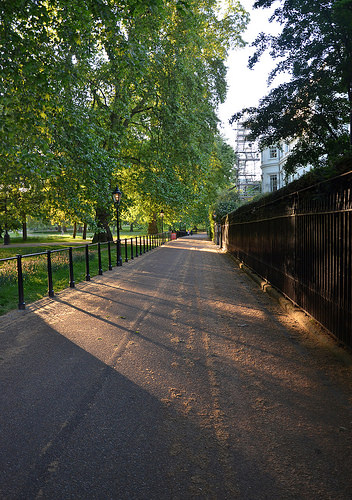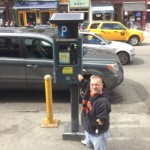Urban greenery means more walking, reveals study

Image from DncnH.
The greener the street, the more people will walk? Possibly, says a recently published study, “Exploring associations between urban green, street design and walking: Results from the Greater London boroughs” by Chinmoy Sarkar, Chris Webster, Matthew Pryor, Dorothy Tang, Scott Melbourne, Xiaohu Zhang and Liu Jianzheng of the University of Hong Kong. The study, which analyzed effects of urban greenery upon walking, comprised over 15,300 respondents, and it found that the presence of greenery — the density of trees on the street, for example — seems to encourage people to walk more.
The researchers investigated the “salutogenic” influences (meaning factors or effects that encourage health rather than disease) of urban greenery on people’s tendency to walk. The study sprang out of the researchers’ awareness of rising obesity and chronic disease, and how “active travel,” such as walking, can combat the impact of these health problems. “In their many forms, urban green spaces constitute one of the most important components of the built environment in influencing walking, physical activity, health and mortality,” write the researchers. The impact of planting trees along the street, a practice held since at least the Renaissance, has been investigated in other studies.
Five key factors have been pinpointed when it comes to urban green’s influence:
- a setting that promotes physical activity;
- a sense of community and social contact;
- opportunities for natural healing and stress relief;
- greenery acting as a “natural sieve” for absorbing pollution; and
- helping reduce the impact of city-generated heat.
In this particular study, the researchers used individual data on walking behavior and total green surface area, putting forth a hypothesis that that “the presence of urban green and well-designed street layout beneficially influences individual’s walking behavior.” Using data from the London Travel Demand Survey, they worked on drawing connections between urban green, density of street trees and individuals’ walking behavior; they also used an index to measure greenness objectively, as well as a measure of street tree density to represent people’s “perception of greenness” and quality of the street.
The researchers dove in deep, analyzing the amount of walking, the demographics of the walkers, and accessibility, among other factors. (You can discover the study in its statistics-heavy entirety online here.) But the takeaways are simple, and have a number of implications for urban planners. For one, green streets are associated with positive perceptions of the city, provide an incentive to walk, and, as the researchers had guessed, has an impact on walkability and physical activity.
Urban planners in particular, the researchers suggest, should be “striving towards healthy urban design.” One key finding for those planners in particular: Urban networks which are outfitted with greenery are more important than green destinations. “[G]reater weight should be given to greening routes rather than destination spaces,” write the researchers. As a person walks, “the lines of visual field are constantly updating and those associated with better perceptions of environmental quality, aesthetics, comfort, physical accessibility” and other motivators that help keep that person moving.
Related Posts
Category: Transportation

















